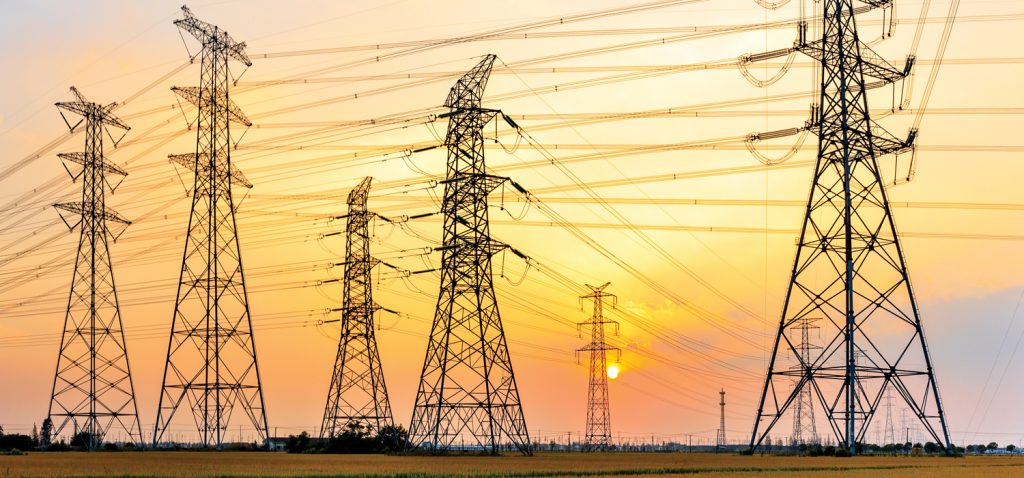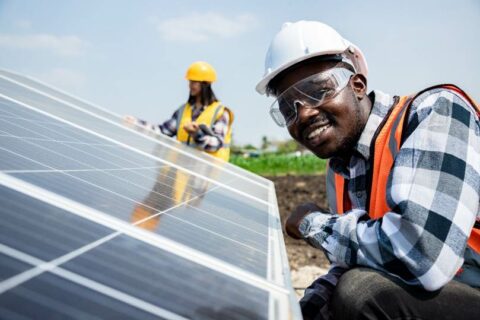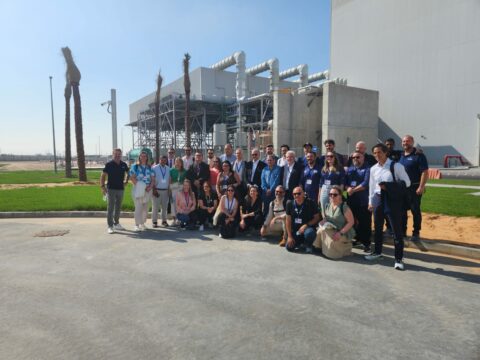SA Mining
Gaining Traction
By: Nelendhre Moodley
Following the global call for sustainable energy solutions, South Africa has been making headway in its renewable energy drive. SA Mining recently caught up with Prashaen Reddy, principal at Kearney and board member of the South African National Energy Association (SANEA), to chat about how the country is faring in its renewable energy agenda.
How big is the renewable energy sector in South Africa, regarding employment, revenue, etc.?
Renewables is a growing sector. Government has been clear that renewables will increase as part of the energy mix. Currently renewables contribute about 8% of South Africa’s energy demand – and is expected to grow to 26% in the next 10 years. A total of 6 422MW of electricity has been procured from 112 renewable energy independent power producers (REIPP). The largest hurdle for independent power producers has been the ability for companies to connect to the grid, with only 3 976MW capacity being connected to the grid from 65 independent power producers. The 2019 report from IPP reflects that renewables have attracted investment of R209.7-billion, of which R41.8bn (20%) was foreign investment. The investment created 48 334 jobs over the years with enterprise contributions of R340.7-million to date, reducing 44.7 million tonnes of CO2 and saving 52.9 million kilolitres of water.
What lessons can South Africa take from countries that have already rolled out a successful renewable energy agenda?
Key lessons include integration into the grid, and having an energy regulator. South Africa could implement a gradual integration of renewable power to the grid as large-scale integration could result in increased costs as seen in Germany. In Germany, as government subsidies and tariffs incentivised investment and production of renewable energy, there was limited thought to the integration of transmission and distribution. As a result, they were not geared up for the increased supply and could not integrate this rapid increase in supply effectively into the system. Then there is a need for an energy regulator (like the National Energy Regulator of South Africa) who sits outside of government to monitor and support the rollout of renewables in a systematic and cost-efficient manner that benefits communities at large.
What is the growth potential of the sector in the next two to three years and what factors have been identified as key drivers?
South Africa has been guided by the Integrated Resource Plan (IRP) for 2030 which provides energy mix supply targets for additional capacity to the grid. Most of the additional capacity will be generated from solar and wind, with wind accounting for 14 400MW and solar 6 000MW.
The government has revised the Electricity Regulation Act to allow generation of power for own use and has announced plans to create a new power entity separate from Eskom. This has opened up more opportunities for independent power producers to target mines and remote areas where there is demand. With government’s gradual approach to the lifting of lockdown restrictions, it is anticipated that post COVID-19, government would look to invest in the renewable energy industry as it could help industry transition back to normal economic activities.
Key drivers for the renewable energy industry will be a focus on excellent project portfolio execution. There is a call for industry to promote agile execution, with modular plant designs and layouts, as well as strong permitting capabilities in key markets and power purchase agreement expertise to speed up agreements with off-take and project financing. There is also a need to develop toolkits that can flexibly cope with renewable intermittency and its impact on revenues, both on the demand side (access to market, ability to profile production curves, and price segmentation) and on the supply side (smart storage solutions and asset pooling).
What are some of the associated challenges faced by the sector, and areas of opportunity?
The challenges associated with the South African renewable energy industry are the same as they have always been, and include:
- Currently Eskom owns and controls the national grid. During COVID-19, Eskom has had surplus power due to reduced demand and issued force majeure notices to renewable power producers.
- Regulations and policies remain a major challenge – there is a call for government to provide fair support and deliver transparent evaluation standards to suit everyone across the board.
- Investor confidence: Other challenges include gaining investor confidence in rolling out the procurement programme. Grid connection and integration is a challenge due to intermittency and proper planning. Funding of small projects is also a challenge as they don’t appeal to banks.
- Access to cheaper electricity: South African rural communities have low levels of access to electricity. Most of the municipalities in townships continue to owe large amounts of money to Eskom. Thus a cheap energy alternative could help reduce costs to customers as well as expand the offering to remote and rural communities.
- Supporting nation building: Eskom has recently issued a request for proposal to secure supply of electricity from independent producers who produce greater than 5MW capacity. Eskom’s long-term strategy should also be revised as demand for energy increases and supply decreases as coal plant use decreases. Given that Eskom’s strategy has been based on a 50-year plant life, most of its plants are facing maintenance problems and reduced agile network connection. In line with the above-mentioned opportunities are prospects for skills and capabilities in the renewable sector.
How will these challenges impact the energy mix scenario going forward?
Government has started with revising some of the regulations, including a proper IRP for 2020. The more government leads the IRP the faster we can reach the energy mix targets. South Africa’s main energy supply remains coal and this will be a large contributor for the next decade; however gas and renewables are increasing market share and will take up the space that coal power station end-of-life will create.
With home owners looking towards adopting renewables, what will be the impact on municipalities?
Municipalities have been very active in promoting renewable power generation. For example Western Cape municipalities are allowed to have small-scale embedded generation of renewable power under 1MW. The government has permitted municipalities to generate their own power in accordance with the IRP.
Furthermore, the IRP will help optimise the supply and demand options after being completed.
The traditional business model of electricity should be re-examined as it is based on revenue collection through volume (consumption-based) sales. Municipality electricity revenue would be negatively affected as more households invest in renewable energy, thus tariffs or monthly charges should be introduced to counter the financial losses that might be a disincentive.
Anything more you’d like to add?
One thing we cannot forget is that renewable energy is here to stay. Natural gas has been a major enabler of change to a cleaner energy mix, especially in the power sector. Gas has steadily displaced coal for base-load generation and has been integral to enabling the dramatic growth of intermittent renewable electricity sources, such as solar and wind. Natural gas delivers carbon emissions half that of coal; however, it has received relatively little credit for lowering emissions.
The emergence of renewables has to be balanced with the potential impact on the coal value chain. Coal mines and their ecosystem will see impacts in the medium term with the global move away from coal as a source of fuel. There is a significant risk of job losses which will need to be offset by investing in upskilling workers to maintain renewables as a future employment opportunity.
Furthermore, investment in constructing photo-voltaic panels needs to be looked at as a means of creating additional jobs in the sector.







 Sign-up and receive the Business Media MAGS newsletter OR SA Mining newsletter straight to your inbox.
Sign-up and receive the Business Media MAGS newsletter OR SA Mining newsletter straight to your inbox.